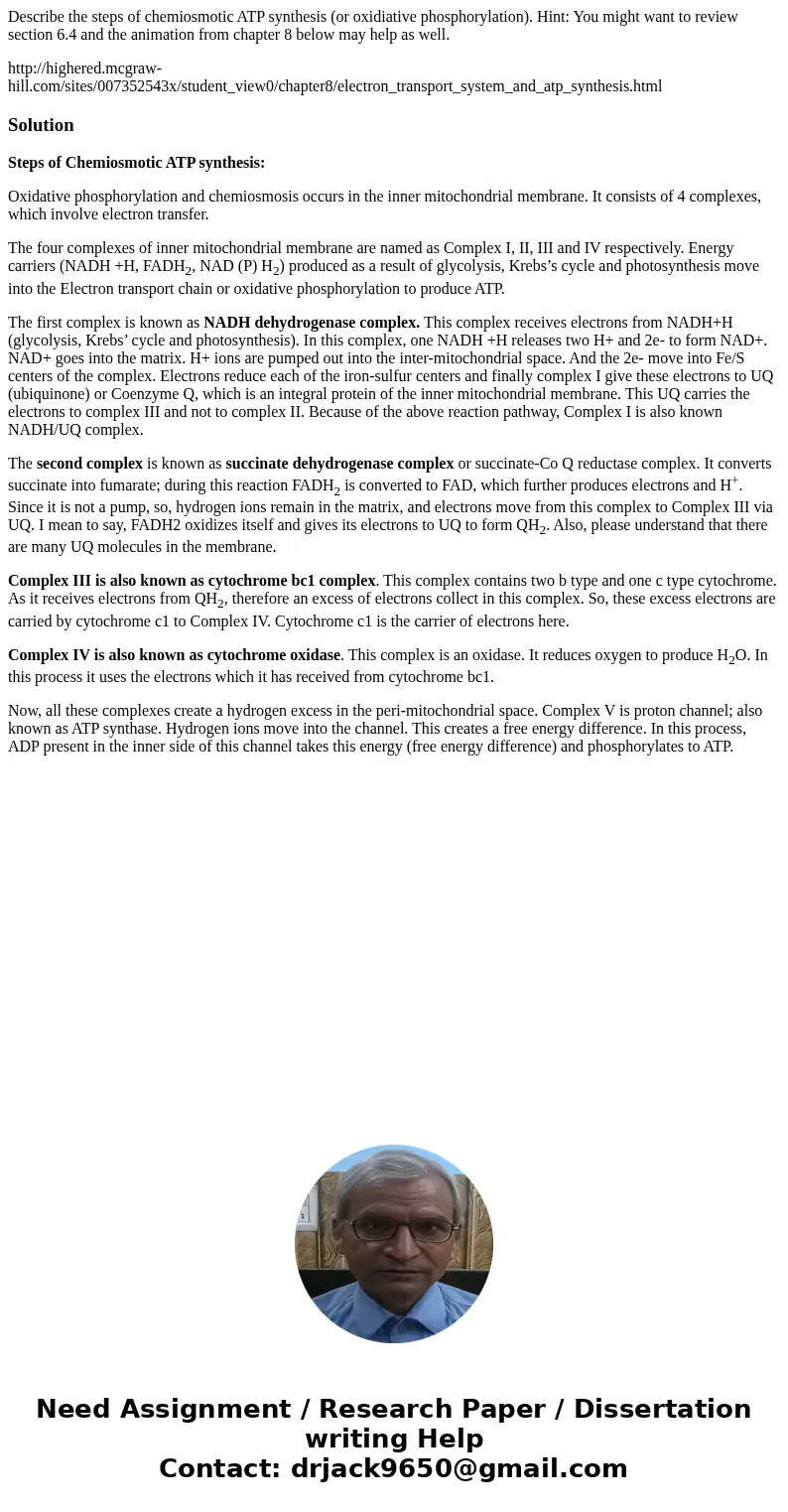Describe the steps of chemiosmotic ATP synthesis or oxidiati
Describe the steps of chemiosmotic ATP synthesis (or oxidiative phosphorylation). Hint: You might want to review section 6.4 and the animation from chapter 8 below may help as well.
http://highered.mcgraw-hill.com/sites/007352543x/student_view0/chapter8/electron_transport_system_and_atp_synthesis.html
Solution
Steps of Chemiosmotic ATP synthesis:
Oxidative phosphorylation and chemiosmosis occurs in the inner mitochondrial membrane. It consists of 4 complexes, which involve electron transfer.
The four complexes of inner mitochondrial membrane are named as Complex I, II, III and IV respectively. Energy carriers (NADH +H, FADH2, NAD (P) H2) produced as a result of glycolysis, Krebs’s cycle and photosynthesis move into the Electron transport chain or oxidative phosphorylation to produce ATP.
The first complex is known as NADH dehydrogenase complex. This complex receives electrons from NADH+H (glycolysis, Krebs’ cycle and photosynthesis). In this complex, one NADH +H releases two H+ and 2e- to form NAD+. NAD+ goes into the matrix. H+ ions are pumped out into the inter-mitochondrial space. And the 2e- move into Fe/S centers of the complex. Electrons reduce each of the iron-sulfur centers and finally complex I give these electrons to UQ (ubiquinone) or Coenzyme Q, which is an integral protein of the inner mitochondrial membrane. This UQ carries the electrons to complex III and not to complex II. Because of the above reaction pathway, Complex I is also known NADH/UQ complex.
The second complex is known as succinate dehydrogenase complex or succinate-Co Q reductase complex. It converts succinate into fumarate; during this reaction FADH2 is converted to FAD, which further produces electrons and H+. Since it is not a pump, so, hydrogen ions remain in the matrix, and electrons move from this complex to Complex III via UQ. I mean to say, FADH2 oxidizes itself and gives its electrons to UQ to form QH2. Also, please understand that there are many UQ molecules in the membrane.
Complex III is also known as cytochrome bc1 complex. This complex contains two b type and one c type cytochrome. As it receives electrons from QH2, therefore an excess of electrons collect in this complex. So, these excess electrons are carried by cytochrome c1 to Complex IV. Cytochrome c1 is the carrier of electrons here.
Complex IV is also known as cytochrome oxidase. This complex is an oxidase. It reduces oxygen to produce H2O. In this process it uses the electrons which it has received from cytochrome bc1.
Now, all these complexes create a hydrogen excess in the peri-mitochondrial space. Complex V is proton channel; also known as ATP synthase. Hydrogen ions move into the channel. This creates a free energy difference. In this process, ADP present in the inner side of this channel takes this energy (free energy difference) and phosphorylates to ATP.

 Homework Sourse
Homework Sourse